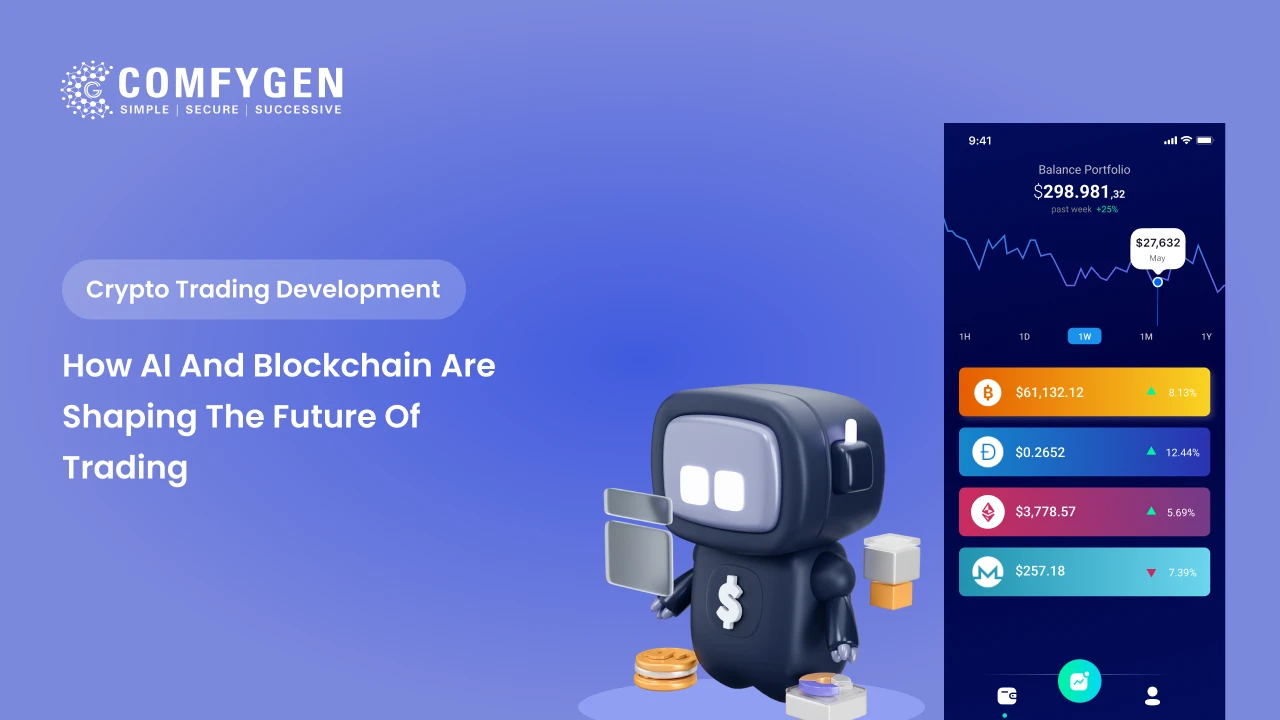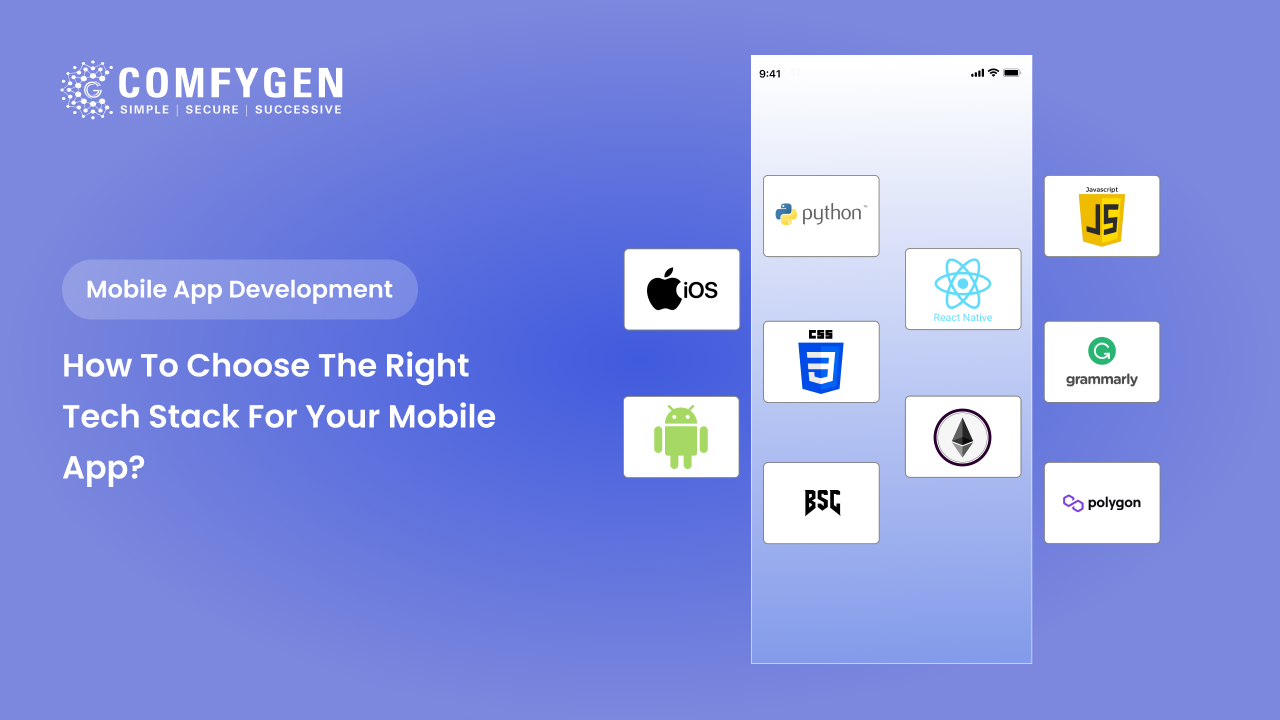How to Build Your First Decentralized App (DApp)?
Decentralized apps, better known as DApps, are quietly disrupting industries from finance, gaming, social media, healthcare, and more. With the global blockchain technology market projected to reach $1,431.54 billion by 2030 (Allied Market Research) and already 5,000+ DApps live on major blockchain platforms, it’s obvious that software is transitioning from centralized to decentralized.
However, what makes DApps so attractive for entrepreneurs and startups? Unlike traditional apps, DApps operate on a peer-to-peer blockchain network, which allows for transparency, security, and user agency. The numerous DApps in the financial space, like Uniswap, play-to-earn games like Axie Infinity, and NFT marketplaces like Open Sea – all DApps, all changing the ways business and community can engage online.
For the aspirational founder and business leaders looking for their next frontier, the DApp ecosystem presents a perfect opportunity:
- Rapid global adoption—all DApps are attracting millions of users, particularly in emerging markets.
- Revenue potential—token economy, transaction fees, decentralized marketplace: the revenue opportunities are endless.
- First-mover advantage—Web3 is an opportunity for early movers in emerging industries to carve out a competitive position.
- Whether you are interested in technology as a person, are an entrepreneur looking for new revenue streams, or are a business looking to capitalize on the DApp ecosystem.
In this guide, you will be shown everything from the fundamentals of DApp technology and options for blockchain platforms, through to smart contract development, deployment, and monetization strategies. Ready to unlock the value of decentralized applications and make your next big idea a reality on the blockchain?
What is a Decentralized App (DApp)?
A Decentralized Application (DApp) is a digital application or program that runs on a blockchain or peer-to-peer network of computers instead of relying on a single centralized server. DApps utilize smart contracts, which are small pieces of code that self-execute to automate and manage core functions directly on the blockchain. It is this type of architecture that makes DApps open-source, transparent, censorship-free, and more robust to failures.
Key Features of DApps
Decentralized
The data and back-end logic are spread out across an entire network of blockchain nodes, so no one individual or group can exercise control of the application.
Open Source
Most DApps publish their source code to allow anyone to assess, verify, and contribute to the program.
Trustless
Users don’t have to trust a central authority, the blockchain guarantees both security and execution of the code.
Tokenized
DApps often have their cryptocurrency or “token” to encourage their use and participation, pay for services rendered, or govern the ecosystem.
Choose the Right Blockchain Platform
Choosing a blockchain platform is one of the most crucial decisions for DApp developers. The chosen platform may influence the app’s scalability, level of security, transaction costs, and user experience. All blockchain ecosystems come with their own positive and negative attributes brought about by community support, so aligning your choice with your project’s objectives is paramount.
Ethereum
- Why it’s popular: The pioneer in smart contract platforms, with the largest developer community and a massive ecosystem of tools, documentation, and existing DApps.
- Pros: Mature, secure, and highly versatile; supports ERC-20, ERC-721 (NFTs), and ERC-1155 token standards.
- Cons: Gas fees can be high, especially during network congestion. Transaction speed is moderate.
- Best for: DeFi apps, NFTs, DAOs, and projects requiring extensive ecosystem compatibility.
Binance Smart Chain (BSC)
- Why it’s popular: Lower fees and faster transactions compared to Ethereum; strong compatibility with Ethereum’s tooling.
- Pros: Cost-effective, high throughput, and EMV-compatible (easy to port Ethereum DApps).
- Cons: More centralized than Ethereum; the developer community is growing, but not as vast.
- Best for: High-frequency trading, DeFi, and consumer-facing apps needing low-cost transactions.
Polygon (Matic)
- Why it’s popular: Built as a Layer 2 scaling solution for Ethereum, offering faster and cheaper transactions while retaining Ethereum’s security.
- Pros: Low fees, high scalability, strong ties with the Ethereum ecosystem.
- Cons: Relies on Ethereum for security; sometimes fragmented user experience.
- Best for: Scalable DApps, gaming, NFT marketplaces, and projects needing interoperability with Ethereum.
Solana
- Why it’s popular: Known for blazing-fast transaction speeds and very low costs.
- Pros: High throughput, growing developer community, increasingly adopted for gaming and DeFi.
- Cons: Less mature than Ethereum, and some network stability issues in the past.
- Best for: Real-time apps, games, and DeFi projects with high user activity.
Other Notables
Avalanche, Cardano, Flow, Near Protocol, and more: Each offers unique features and trade-offs for speed, security, developer tools, and ecosystem maturity.
How to Develop Your First Decentralized App (DApp): A Step-By-Step Guide
Step 1: Define the Purpose and Core Features
A journey begins with a shared vision. Once you understand your user and what they want to achieve, you can start the development process. You must explain exactly what your DApp will do and who it will serve before writing a line of code. What is the real-world problem that DApp adds value to by decentralizing it, like trustless transactions, transparently recording interactions, new monetization opportunities, etc.? Once you understand the purpose of the DApp, you can think about the must-have features you want to build. This includes everything from what kind of wallet integration is needed and whether you want to implement tokens, a user dashboard, a peer-to-peer marketplace, a decentralized voting system, etc. With this clarity, you can ensure that every technical and design decision made is aligned with your aims.
Step 2: Design the User Experience (UI/UX)
User experience (UX) can be the difference between the success or failure of your DApp, especially since your end-user may not have a technical background. The first thing you should do is map out user journeys and generate wireframes (utilizing design tools such as Figma or Sketch), considering a new user’s onboarding experience, establishing crypto wallet connectivity (e.g., MetaMask or WalletConnect), the flow through the key features of your DApp, etc. You should aim for intuitive flows and interfaces that clearly define the understanding of blockchain, minimizing the complexity and friction of onboarding so that the user can feel no more or less comfortable than when using any leading web or mobile application when interacting with your DApp.
Step 3: Develop Smart Contracts
Smart contracts are the backbone of any DApp—they provide the mechanism for automating transactions, enforcing rules, and allowing trustless logic to operate. Development typically starts with a programming language like Solidity for Ethereum, BSC, or Polygon, or Rust for Solana. DApp development platforms such as Remix IDE, Truffle, or Hardhat will allow developers to code, debug, and deploy easily. Focus on writing clean, efficient code for the core logic of the DApp: whether it is asset management, peer-to-peer transfers, or managing permissions and rewards. Developers should always have security first in their minds; smart contract bugs, even minor ones, can lead to disaster, so stick to best practice and use audited libraries.
Step 4: Build the Frontend
The frontend represents the part of your DApp that users will interact with, so you need to ensure it is attractive and responsive. Most DApp frontends are created using a popular framework: React, Angular, or Vue.js. Frameworks help you develop rich, dynamic interfaces. Interfacing with the respective blockchain is handled via libraries like Web3.js or Ethers.js. These libraries connect your front-end with deployed smart contracts on the blockchain, so plan how users will sign transactions, view blockchain stored data, and interact with decentralized features, all while reflecting how you can incorporate security and openness with your design. Good DApps hide the complexity of the blockchain from end users and provide a streamlined and familiar experience.
Step 5: Develop the Backend (If Needed)
While DApps strive for maximum decentralization, some use cases require off-chain components to support scalability or store large amounts of data. For instance, you might use decentralized storage solutions like IPFS or Arweave to host files, images, or large datasets. In certain scenarios, a hybrid backend with traditional cloud services (AWS, Firebase) can manage user profiles, analytics, or notifications while core transactions remain on-chain. The key is to strike the right balance—keep your DApp’s critical logic decentralized, but don’t hesitate to leverage centralized tools where necessary for efficiency and performance.
Step 6: Test Thoroughly
Testing is critical in DApp development, given the irreversible nature of blockchain transactions. Start by using local blockchain simulators like Ganache and public testnets to thoroughly check your smart contracts and frontend integration. Comprehensive unit and integration tests should cover every possible user interaction, edge case, and failure scenario. Utilize tools like Mocha, Chai, or Truffle’s built-in test suite to automate this process. Before going live, consider a third-party security audit to uncover vulnerabilities—robust testing and external review are the best ways to protect your users and your reputation.
Step 7: Deploy Smart Contracts and Frontend
Once you’re confident in your product, it’s time to launch. Deploy your smart contracts to the chosen mainnet using tools like Truffle, Hardhat, or directly through Remix and wallet integrations. For the frontend, consider using decentralized hosting solutions such as IPFS or Fleek to maintain censorship resistance, or leverage traditional platforms like Netlify or Vercel for added speed and convenience. Ensure your deployment process includes robust documentation and user support, making it easy for users to access and interact with your DApp from day one.
Step 8: Monitor, Maintain & Update
The journey doesn’t end at launch. Successful DApp projects require continuous monitoring, maintenance, and evolution. Use analytics and monitoring tools like Tenderly or Dune Analytics to track contract performance, user activity, and potential issues in real-time. Gather feedback from early users, identify pain points, and iteratively improve features and usability. Stay engaged with the blockchain community and be prepared to update smart contracts and frontend elements as technology and user needs evolve. In the fast-paced world of DApps, agility and responsiveness are key to long-term success.
Monetization Strategies: Turning Your DApp into a Revenue Stream
Building an innovative DApp is just the first step; unlocking its earning potential is where the business value is realized. In a decentralized environment like DApps, the creator has multiple ways to explore and a plethora of monetization models that are user-centric and future-proof.
Transaction Fees
One of the simplest and popular approaches. You charge a small percentage on each transaction processed by the DApp. Many DApps today deposit a portion of transaction fees into their treasury or vaults and then distribute the rest to users who are providing liquidity. All DApps have transaction fees. DEXs/DApps like Uniswap, where every swap earns money not just for the protocol but also for liquidity providers. It is a model executed very well in thousands of projects.
Token Economy
This entails issuing your utility or governing tokens that a user can buy, earn, or spend within your bounded ecosystem. Tokens can serve as engagement hooks, but they are also an asset that can be appreciated by the DApp’s increased utility and popularity.
Premium Features or Subscription Models
Decentralized storage DApp could offer some basic usage free of charge, and charge users for a higher storage limit or more advanced analytics. NFT marketplaces also make money by taking a cut of sales or charging fees for featured placements as a premium service, and if your DApp incorporates unique consumable digital goods or collectibles, you should also consider royalties, where a creator can take a percentage from each NFT when it is resold in the secondary market.
Advertising and Sponsorships
These are also developing models, especially with the rise of decentralized social networks or content platforms. In this situation, brands can sponsor content, display ads, or promote community-focused initiatives using tokens transparently; the community can see exactly where their tokens went via a blockchain audit.
Final Verdict
Decentralized Apps (DApps) are redefining how businesses and users interact, opening up new opportunities for innovation, transparency, and revenue. DApps offer the perfect blend of cutting-edge technology and real-world impact for entrepreneurs seeking a first-mover advantage, eliminating intermediaries, empowering users, and creating scalable, global solutions. While building a DApp involves careful planning, robust development, and strategic monetization, the potential rewards far outweigh the challenges. With the blockchain ecosystem rapidly evolving, now is the ideal time to explore, experiment, and invest in DApp development. Leap, transform your business vision, and be a part of the decentralized revolution shaping the future of digital experiences.

Mr. Saddam Husen, (CTO)
Mr. Saddam Husen, CTO at Comfygen, is a renowned Blockchain expert and IT consultant with extensive experience in blockchain development, crypto wallets, DeFi, ICOs, and smart contracts. Passionate about digital transformation, he helps businesses harness blockchain technology’s potential, driving innovation and enhancing IT infrastructure for global success.









